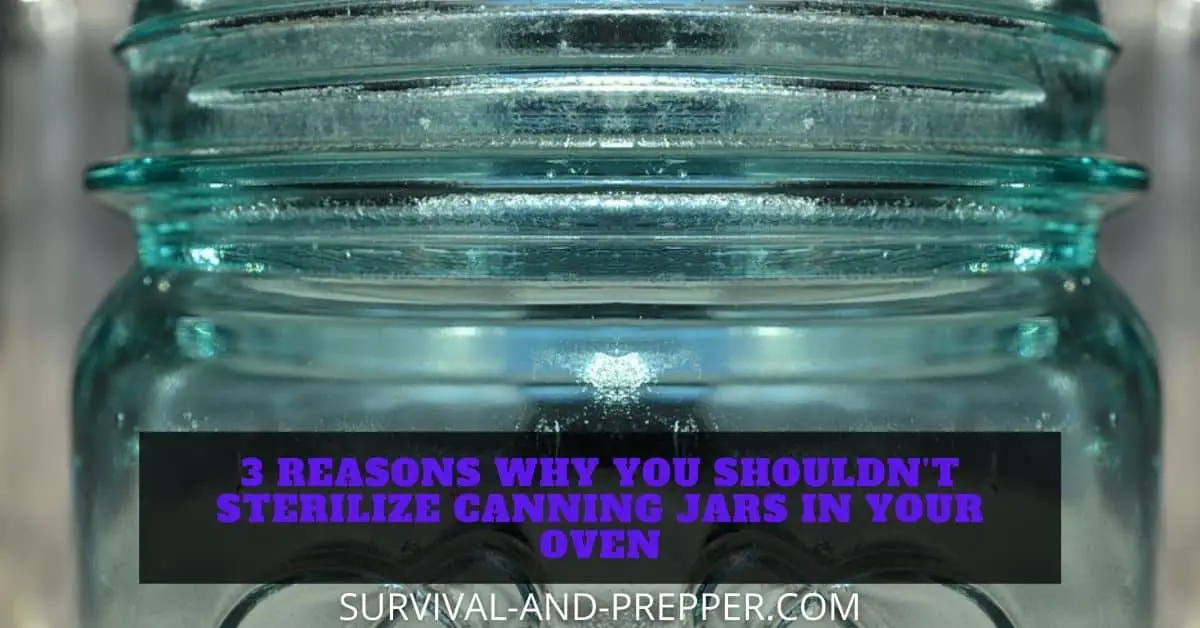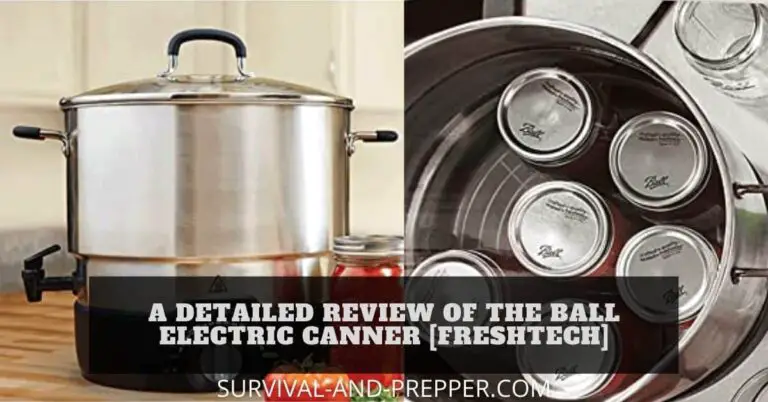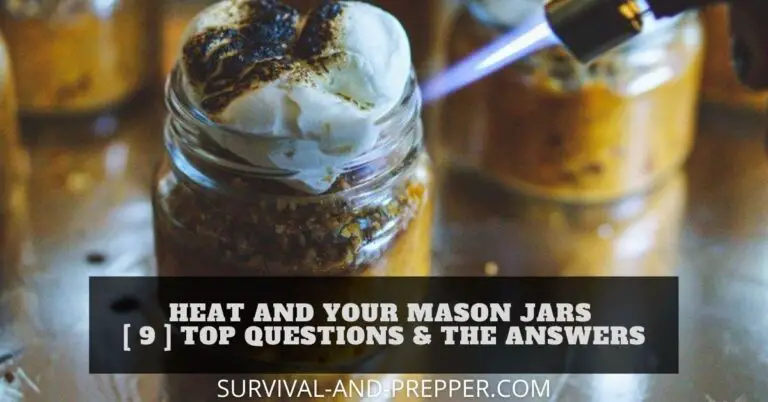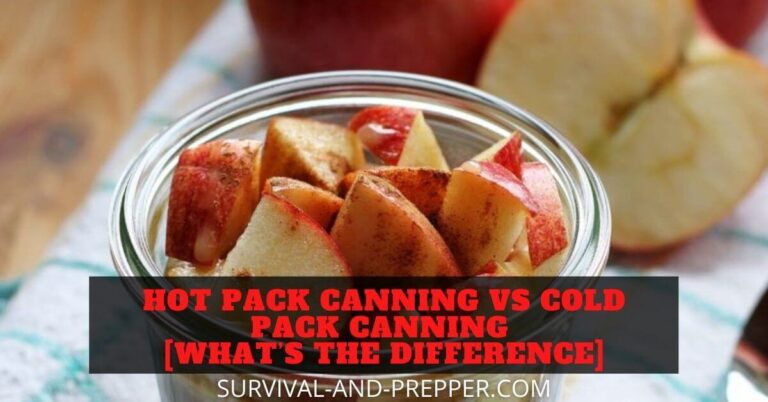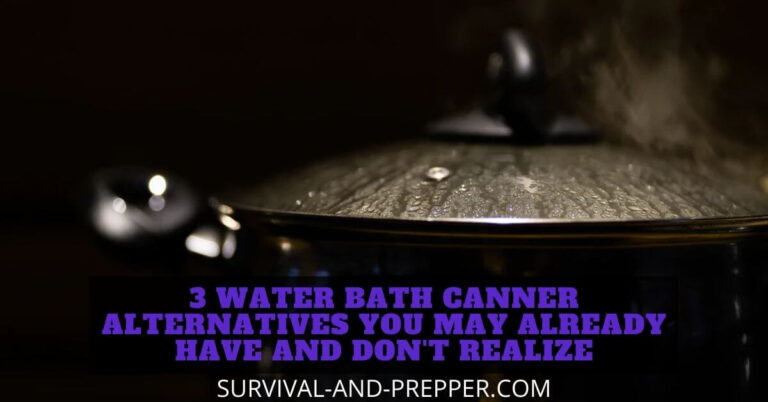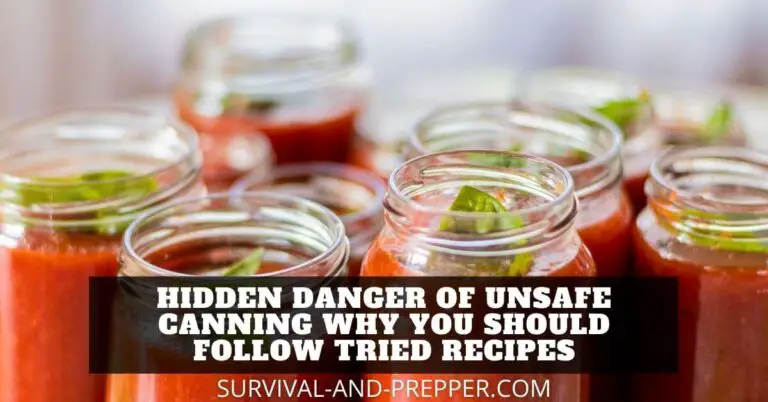3 Reasons Why You Shouldn’t Sterilize Canning Jars in Your Oven
If you have been canning for a while then it is likely you have been told how important it is to sterilize your canning jars.
Newer research seems to indicate that you may not need to always sterilize your jars. For instance the University of Utah indicates sterilization isn’t needed for water bath canning in which you will process the jars for more than ten minutes.
However, Despite this I still feel it is worth the extra amount of time it takes to sterilize my jars. I figure it doesn’t hurt and is one more step to ensuring a safe finished product.
Over the course of the years numerous “methods” to sterilize your jars have sprung up. These include sterilizing your jars in a microwave, in a dishwasher, in the oven and the classic boiling water method.
Today we are going to discuss how you sterilize jars in the oven and ultimately Is it Safe to sterilize canning jars in the oven?
To answer that second question;
Mason Jars, or any other brand are not produced from a glass capable of handling thermal shock. When heated in an oven, during the sterilization process, uneven heating could cause hot and cold spots in the glass, resulting in possible shattering of the jars. Opt for a traditional water bath to sterilize your jars instead.
Now to dive deeper into this let’s examine the process commonly used to sterilize canning jars in the oven, and why it is unsafe to do so.
Sterilizing Mason Jars in an Oven; The Process
First let me start off by reiterating that sterilizing jars in your oven is not safe and that I do not recommend doing so. The steps being listed here are solely for discussion and lead to the reasons why this is not safe that are to follow.
Sterilizing jars in an oven is done by placing your jars onto a clean baking sheet. This sheet is then placed into an oven that is still turned off. Once they are in the oven the temperature is then set to 250 degrees and once the oven reaches that temperature the jars are left in the oven for 30 minutes.
In theory this results in the jars being slowly heated from cool to 250 degrees and held at that temperature for 30 minutes which should result in any bacteria being destroyed or atleast inactivated.
However, there are some issues with this theory.
Why People Might Think Oven Sterilization is a Safe Process
As with anything there are times when a task is performed and everything works out. When this is repeated several times, then people often assume that it is a safe practice since there have been no accidents.
However that does not mean it is safe, it simply means that nothing went wrong those times. First let’s examine why oven canning might appear safe.
As mentioned at the beginning of the article, the University of Utah as well as other research has indicated that in many cases sterilization of your jars prior to beginning may not be necessary. (I still do, but using the water bath method.)
Often when using oven sterilization the jars are then filled and sealed using a water bath or pressure canner.
If you combine these two pieces of information it becomes easy to see why many people believe it is safe to sterilize their jars in the oven. In most cases, the sterilization was not even necessary.
However, what happens when you start dealing with canning recipes processed in a different way. Now we begin to enter the realm of if oven sterilization is even working in the first place.
Now that we have covered the basics of what sterilizing your jars in the oven is and why it may seem that it is a safe practice, let’s look into some reasons why you should not attempt to sterilize your jars in the oven.
3 Reasons Why Oven Sterilization of Jars Does Not Work
Several issues arise when you begin considering the science behind sterilizing something in an oven. While theoretically it is an excellent idea, in practice it should be avoided.
Heat Transfer of the Glass Used in Mason Jars
Different substances tend to transfer heat in different ways. When sterilizing canning jars an equal distribution of heat is important. Using an oven results in the glass being heated by air. While air does tend to heat up the areas around it, there can be significant differences in heat over even a few inches.
Take a candle and place your hand above it. You can feel the heat produced by the flame. Now move your hand an inch or two to the right and the heat quickly drops or disappears all together. This is how air transfers heat and even inside of an enclosed oven this variation in heat can result in uneven heating of your jars.
As a material heats it will undergo various stresses and if not heated evenly it can shatter, break or melt, shattering being the most likely in the case of glass jars.
You might be wondering if heat causes the glass jars to break, then why don’t they break in a traditional water sterilization.
Let’s go back to the candle example. If you take a pot of water and suspend that over the candle allowing it to heat up.As the water warms it will rise to the surface pushing the cooler water down so that the liquid all heats at about the same speed.
If you were to stick your finger anywhere in that water you would find that it is extremely close to the same temperature throughout the mixture. (Please don’t try this; it will result in burns.)
When used for canning this same transfer of heat found in the water, transfers over to the glass heating the entire jar at the same time. The only key here is that the jars have to be placed into the water before the heat is applied.
Oven Temperatures Vary Greatly
Since the temperatures needed to sterilize glass are well known and an oven has a thermostat it would seem that it would be a simple task to reach the proper temperatures.
However, this is not actually the case as pointed out by HealthCanning General Electric indicates that oven temperatures can average up to 30 degrees over the set temperature and as far below as -30 degrees for a total spread of 60 degrees during the course of the oven cycling.
This spread in temperature coupled with the way air behaves when heated plus the variables such as open doors and drafts lead to a very uneven heating environment.
When dealing with glass jars there is a temperature in which sterilization occurs, but also a danger point that increases the chance of breaking as temperatures rise.
With the need to heat your jars to at least 212 degrees fahrenheit you would have had your oven set at a minimum of 242 degrees to ensure this temperature is reached, however that would have top end temperatures exceeding 300 degrees.
The dry air in an oven along with this much higher than you expected temperatures greatly increases the chance of glass breakage. It is also possible that the jar may not break right away, but instead become weakened and brittle. This could create a hazard when you pick the jar up and it instead shatters in your hand.
It Is Nearly Impossible to Verify the Sterilization Was Successful
Because of all of the variables associated with baking, it is very difficult to tell if your jars even reached the proper temperature and if they maintained that temperature for the full duration.
Take cooking your thanksgiving turkey for instance. You will set your oven to 325 degrees and cook a 10 lb turkey for more than 3 hours. When you check the internal temperature with a thermometer you are looking for it to be at a minimum of 165 degrees.
But wait, the oven was set at 325. Why is the turkey only 165? This all goes back to the heat transfer of different substances, in this case the air, metal pot and turkey itself all played a role.
With this variation there is no way to be certain that the particular portion of your jar and any potential contaminants ever reached the required temperature.
In a water submerged sterilization the water, which you can visibly see boiling, thus knowing it has reached at least 212 degrees, is touching every surface of the jar so you can be fairly certain that all points have reached the required temperature.
In Most Cases Sterilization Isn’t Needed, Make Sure to Use Approved Method When It Is
So in conclusion, Most of the time your recipes are not going to require pre-sterilization of the jars. (Some recipes such as jams are not processed as long in the canner and it is necessary to sterilize these. For safety anytime a recipe calls for less than 10 minutes processing time, sterilize your jars in boiling water for at least ten minutes.)
To sum everything up.
Sterilizing jars in an oven is not a safe option. Doing so could result in damage to the jars, non-sterilized jars and injury to yourself. The cause of each of these issues is due to how air transfers heat, which is insufficient to obtain the desired results. Remember to sterilize your jars in boiling water, for at least ten minutes.
